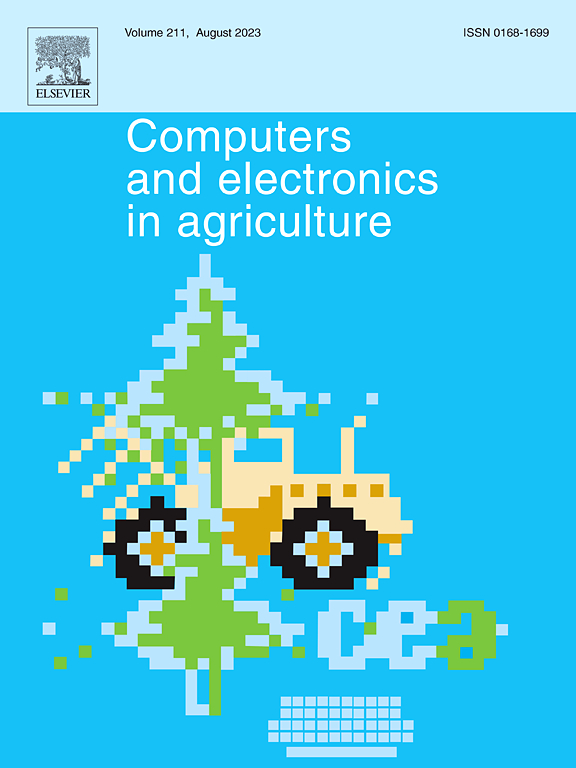Real-time monitoring of fertilizer runoff at the watershed scale using a low-cost solar-powered Lego-like electrochemical water quality monitoring system
IF 7.7
1区 农林科学
Q1 AGRICULTURE, MULTIDISCIPLINARY
引用次数: 0
Abstract
Effective management strategies for nutrient runoff and the environmental impact of row crop farming must be implemented on a watershed scale. However, most agricultural field studies and data collection methods rely on water quality measurements from a few outlet points, often using lab-based assays. These methods fail to capture the spatial and temporal variability of runoff, particularly during critical events such as precipitation. Although some efforts have been made towards real-time in-field monitoring, current electrochemical sensors used in such systems face three major challenges: high cost, difficulties in data collection and transmission in harsh environments, and reliance on onboard power supplies. These limitations hinder their suitability for long-term, sustainable field operation. To address these challenges, we introduce a novel, Lego-inspired packaging platform utilizing injection molding (IM) technology, transforming traditional additive-printed, low-cost electrochemical sensors—typically used for single-use applications—into robust, high-performance sensors. These customizable sensors are designed for nitrate and oxidation–reduction potential (ORP) monitoring in harsh environmental conditions. The sensors were integrated into an automated water collection and in-situ measurement system, enabling easy field deployment and real-time wireless transmission of nitrate, ORP, and environmental data. A solar-powered energy harvesting unit was incorporated to eliminate the need for onboard batteries, providing a sustainable power source for the system. The fully integrated Solar Powered Lego Assembly Sensors for Harsh-Environment (SPLASH) system demonstrated a production-to-consumption energy ratio of 150% in the field, confirming its self-powering capability. The IM-packaged sensors maintained robust and stable performance within ecologically relevant ranges for nitrate (0.1 mM to 100 mM) and ORP (80 mV to 650 mV), with less than 10% drift over one month, validating their effectiveness for fertilizer detection and water quality monitoring. To capture the infield performance, the SPLASH was deployed in three sites at Pine Creek watershed, Indiana, USA, to identify potential high-risk zones of nutrient runoff at the watershed level. The system effectively identified critical zones with elevated nitrate runoff, correlating these findings with the elevation levels of the fields. The simplicity and open-source design of the SPLASH platform is envisioned to empowers farmers and policymakers to make informed decisions regarding the adoption of best management practices within each individual sub-watershed.
求助全文
约1分钟内获得全文
求助全文
来源期刊

Computers and Electronics in Agriculture
工程技术-计算机:跨学科应用
CiteScore
15.30
自引率
14.50%
发文量
800
审稿时长
62 days
期刊介绍:
Computers and Electronics in Agriculture provides international coverage of advancements in computer hardware, software, electronic instrumentation, and control systems applied to agricultural challenges. Encompassing agronomy, horticulture, forestry, aquaculture, and animal farming, the journal publishes original papers, reviews, and applications notes. It explores the use of computers and electronics in plant or animal agricultural production, covering topics like agricultural soils, water, pests, controlled environments, and waste. The scope extends to on-farm post-harvest operations and relevant technologies, including artificial intelligence, sensors, machine vision, robotics, networking, and simulation modeling. Its companion journal, Smart Agricultural Technology, continues the focus on smart applications in production agriculture.
 求助内容:
求助内容: 应助结果提醒方式:
应助结果提醒方式:


